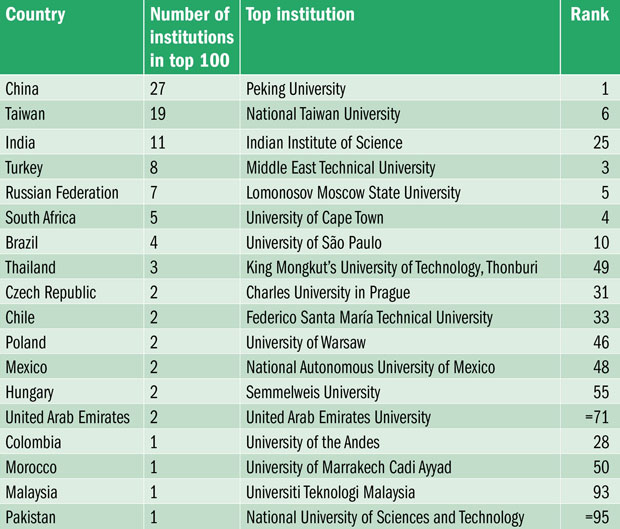
Universities in developing nations are strengthening their presence in world rankings, says Phil Baty.
We live in exciting times. While the US, Canada and the UK – the traditional powerhouses of the West – suffered losses in the Times Higher Education World University Rankings 2014-2015, leading universities in developing nations continued to progress.
In China, Beijing’s Tsinghua University rose up the rankings for the third consecutive year to cement its place in the world top 50, while its Shanghai counterpart, Fudan University, made the world top 200 for the first time. In Russia, Lomonosov Moscow State University entered the top 200 list while in Brazil, the University of São Paulo edged closer to the elite group. Turkey’s Middle East Technical University made a splash by rocketing into the top 100.
Overall, 10 universities from emerging economies made the 2014-2015 global top 200 list, compared with just five in 2013-2014.
But behind the few flagship universities that have already broken into the overall World University Rankings, many others are hungry for advancement, global performance data and visibility on the world stage. Here, the THE BRICS & Emerging Economies Rankings, first published last year, fill an important gap.
This year’s rankings provide detailed data on 100 universities from 18 emerging economies, based on the tried-and-trusted methodology of the THE World University Rankings. These rankings use the same 13 performance indicators as the overall world rankings, covering the full range of a university’s core activities (teaching, research, knowledge transfer and international outlook), but with a methodology specially recalibrated to better reflect the profile of institutions in developing economies.
In recognition of the fact that some developing country universities will not have research systems as mature as those of the developed world, and may not be as well integrated with the primarily English-language global research publishing system, the requirement that ranked institutions publish a minimum of 200 papers a year over five years, in journals indexed by Thomson Reuters’ Web of Science, has been relaxed. Accordingly, the “research influence” indicator based on research paper citations has been given a reduced weighting, from 30 per cent in the world university rankings to 20 per cent here.
To better reflect some of the development priorities of emerging institutions, the “industry income – innovation” indicator has been increased in weight from 2.5 per cent to 10 per cent, while the “international outlook” indicator has increased from 7.5 per cent to 10 per cent.
We hope this bespoke picture of leading universities in the emerging economies, judged against trusted global standards but in a more appropriate regional and economic context, not only provides the performance data demanded, but also provides the tools and stimulus to further drive improvement.
Phil Baty
Editor, Times Higher Education World University Rankings

Register to continue
Why register?
- Registration is free and only takes a moment
- Once registered, you can read 3 articles a month
- Sign up for our newsletter
Subscribe
Or subscribe for unlimited access to:
- Unlimited access to news, views, insights & reviews
- Digital editions
- Digital access to THE’s university and college rankings analysis
Already registered or a current subscriber? Login